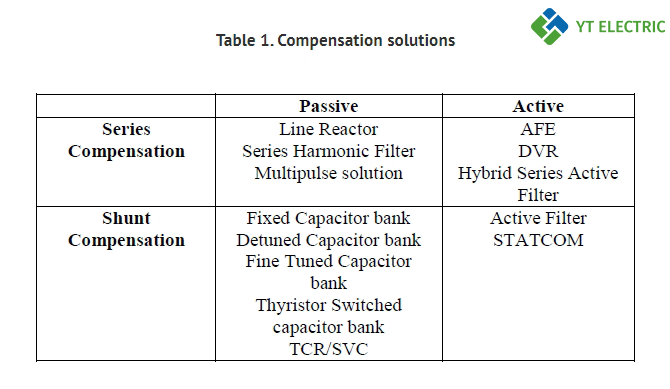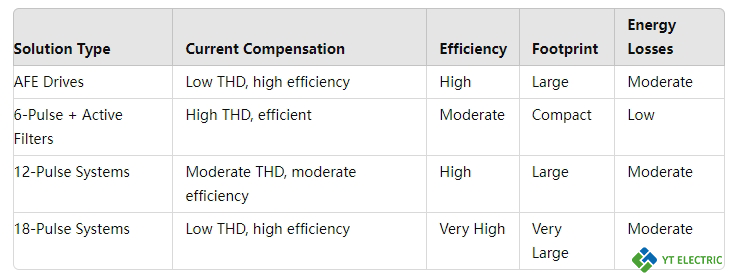
Introduction
This blog compares harmonic mitigation techniques across various applications in real time. It examines different aspects of active and passive series and shunt filters, focusing on reducing harmonic loading in drive systems. It discusses the pros and cons of parallel and series approaches, as well as active and passive solutions, supplemented by practical results from several case studies.
To grasp the discussions in this blog, it is crucial to understand the following concepts: harmonics, notching, voltage distortion, current distortion, and voltage unbalance.
Harmonics in power systems are primarily caused by semiconductor-based loads, with common examples including transistor-based variable frequency drives and line-commutated DC drive systems. Harmonics are multiples of the fundamental frequency; for instance, the 5th harmonic in a 50 Hz system corresponds to a 250 Hz frequency component.
In a simplified model of a 3-phase rectifier, if the rectifier output is a constant DC-current, the harmonic orders on the AC line can be represented as:

The amplitude of harmonics depends on various factors, including grid strength and series line impedance. A stronger grid typically results in higher current harmonics but lower voltage harmonics.
Harmonics can cause several issues, such as:
Reducing harmonic levels is essential to prevent these problems, although harmonics do not always result in such issues.
Harmonic compensation solutions can be categorized into four classes based on two factors: whether the solution is active or passive, and whether it is used in shunt or series with the linear loads. The following solutions are commonly used:

Line Reactor: A 3-phase series choke placed in front of the rectifier, reducing current distortion and adding protection to the rectifier. However, it is impractical for large drives and does not meet harmonic regulation levels alone.
Series Harmonic Filter: A more advanced version of the line reactor, with added components to trap harmonics. It provides better harmonic rejection but is non-flexible and may lead to leading power factor correction issues.
Multi-Pulse Transformer: Utilizes phase-shifted windings to cancel specific harmonic orders. Effective in reducing harmonics distortions but sensitive to voltage unbalance and transformer asymmetry.
Passive shunt filters, such as fine-tuned passive filters, provide compensation by being sized to fit the disturbance rather than the full load. These filters are effective but sensitive to grid conditions and can interact unpredictably with other loads.
Active Front-End (AFE) Drives: These replace diode rectifiers with controlled rectifiers, allowing energy to be fed back to the grid during braking. AFEs offer low current distortion and excellent power factor but are complex, expensive, and large.
Active Filters: Connected in parallel with the load, these filters measure and counteract harmonic currents flowing by injecting counter-phase harmonics. They are compact, tunable, and can provide VAR compensation. Active filters are efficient and straightforward to retrofit but introduce some switching ripples.
For a 1000A variable frequency drive, the required harmonic mitigation can vary based on system impedance and equivalent series reactance. In weak grids, current distortion might be lower, but in strong grids, it can be higher. For instance, harmonic reduction needs might range from 150 to 330 A RMS, depending on the application.
Different harmonic mitigation solutions are compared based on performance, efficiency, and practical application results. The table below summarizes the performance and efficiency of various solutions:

Harmonics are a significant concern in industrial applications, especially with the increasing use of variable frequency drives. Various mitigation techniques, including passive and active solutions in both series and shunt configurations, offer different benefits and drawbacks. By understanding and implementing appropriate harmonic mitigation strategies, industries can improve efficiency, reduce downtime, and enhance overall system reliability.
In conclusion, while harmonics present a challenging issue, a comprehensive approach to mitigation can effectively manage their impact on industrial operations. Properly chosen solutions tailored to specific applications can ensure a stable and efficient power system, minimizing the adverse effects of harmonics.
Subscribe to us to enjoy event prices and get some of the best prices.
 IPv6 network supported
IPv6 network supported

